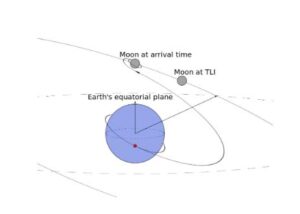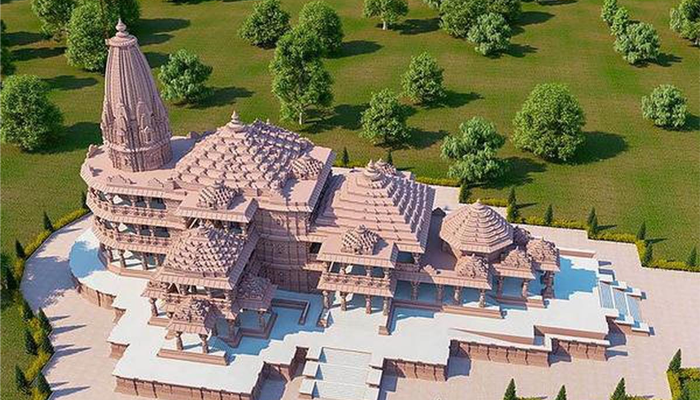If the Chandrayaan 3 mission is carried out successfully by the Indian Space Research Organisation (ISRO), India will join a select group of just three other nations that have accomplished a soft landing on the Moon—the United States, the former Soviet Union, and most recently, China. Before landing on the Moon successfully, both the US and the USSR suffered multiple spacecraft accidents. With the Chang’e-3 mission in 2013, China stands out as the only nation to achieve success in its first attempt.
There are a number of crucial tasks that Chandrayaan 3 must complete, including earthbound maneuvers, entry into the lunar orbit, lander separation, a sequence of deboost maneuvers, and a power descent phase for a smooth landing. The Chandrayaan-3 spacecraft’s project director, P Veeramuthuvel, disclosed this information.
Chandrayaan 3 Live Updates and Location:
23 August – Anticipated to commence on August 23, 2023, at approximately 1745 Hrs. IST, the powered descent marks the next significant phase of this endeavor.
Watch Here:
20 August: The second and final deboosting operation was carried out by Chandrayaan-3, resulting in a reduction of the LM orbit to 25 km by 134 km.
August 19, 2023 : The orbit of the moon that the Lander Module is in measures 113 km by 157 km. Plans call for a second de-boosting on August 20, 2023.
19 Aug 2023- Earth captured by Vikram Lander with Moon in background.
Chandrayaan-3 Mission:
View from the Lander Imager (LI) Camera-1
on August 17, 2023
just after the separation of the Lander Module from the Propulsion Module #Chandrayaan_3 #Ch3 pic.twitter.com/abPIyEn1Ad— ISRO (@isro) August 18, 2023
August 18: The ‘deboosting’ procedure, which decreased the spacecraft’s orbit to 113 km by 157 km, was successfully accomplished. Deboosting is the process of slowing down to get oneself in an orbit where the Perilune, the point closest to the Moon, is 30 km away and the Apolune, the farthest point, is 100 km away.
Vikram lander records breathtaking lunar video.
A brief video of the Moon taken on August 15, 2023, by Chandrayaan-3’s Lander Position Detection Camera has been made available by ISRO.
MOON 🌖 as captured by the Lander Position Detection Camera (LPDC) on August 15, 2023#Chandrayaan3 #ISRO pic.twitter.com/6fNUIQaIAD
— LVM3-M4/CHANDRAYAAN-3 MISSION (@chandrayaan_3) August 18, 2023
August 17 – The Vikram Lander Module of Chandrayaan has been successfully separated from its Propulsion Module, according to ISRO. Tomorrow at 4:00 PM, the Vikram will begin its ascent towards the moon.
Chandrayaan-3 Mission:
‘Thanks for the ride, mate! 👋’
said the Lander Module (LM).LM is successfully separated from the Propulsion Module (PM)
LM is set to descend to a slightly lower orbit upon a deboosting planned for tomorrow around 1600 Hrs., IST.
Now, 🇮🇳 has3⃣ 🛰️🛰️🛰️… pic.twitter.com/rJKkPSr6Ct
— ISRO (@isro) August 17, 2023
August 16 – Chandrayaan-3 has successfully been placed in its intended orbit of 153 km by 163 km thanks to a carefully timed ignition that only needed a short amount of time to complete. The maneuvers to reach the moon have now been completed. The emphasis now is on preparing the Lander Module and the Propulsion Module for their unique paths. The next phase will include the strategic separation of the Lander Module from the Propulsion Module on August 17, 2023.
Chandrayaan-3 Mission:
Orbit circularisation phase commencesPrecise maneuvre performed today has achieved a near-circular orbit of 150 km x 177 km
The next operation is planned for August 16, 2023, around 0830 Hrs. IST pic.twitter.com/LlU6oCcOOb
— ISRO (@isro) August 14, 2023
August 14 – Chandrayaan is currently only a few hundred kilometers from the moon. The orbit has now officially entered the circularization phase. An orbit that is virtually round and measures 150 by 177 kilometers has been successfully established today thanks to a carefully planned maneuver. The ensuing surgery is slated to take place on August 16, 2023, at roughly 0830 IST.
Chandrayaan-3 Mission:
Even closer to the moon’s surface.Chandrayaan-3's orbit is reduced to 174 km x 1437 km following a manuevre performed today.
The next operation is scheduled for August 14, 2023, between 11:30 and 12:30 Hrs. IST pic.twitter.com/Nx7IXApU44
— ISRO (@isro) August 9, 2023
10th August – The Lunar Orbit Insertion image of the moon and the Earth image captured by the Lander Image camera on July 14th are shared by ISRO.
Chandrayaan-3 Mission:
🌎 viewed by
Lander Imager (LI) Camera
on the day of the launch
&
🌖 imaged by
Lander Horizontal Velocity Camera (LHVC)
a day after the Lunar Orbit InsertionLI & LHV cameras are developed by SAC & LEOS, respectively https://t.co/tKlKjieQJS… pic.twitter.com/6QISmdsdRS
— ISRO (@isro) August 10, 2023
8th August – In a speech with an NGO called Disha Bharat, Chairman of ISRO Dr. S. Somnath confidently asserts that the Chandrayaan-3 mission will succeed even if the sensors or the engine malfunction. If the propulsion system is strong, Vikram will still make a smooth landing even if everything else fails, including all sensors ceasing to function.
6th August – By firing its engines backwards, the spacecraft successfully carried out a scheduled orbit lowering maneuver. As a result, with an orbit range of 170 km x 4313 km, it has now gotten closer to the Moon’s surface. On August 9, 2023, between 13:00 and 14:00 Hrs. IST, another operation will be carried out to further lower its orbit. This will be the next stage in the procedure.
Chandrayaan-3 Mission:
The spacecraft successfully underwent a planned orbit reduction maneuver. The retrofiring of engines brought it closer to the Moon's surface, now to 170 km x 4313 km.The next operation to further reduce the orbit is scheduled for August 9, 2023, between… pic.twitter.com/e17kql5p4c
— ISRO (@isro) August 6, 2023
5th August – Chandrayaan-3 entered the lunar orbit smoothly, precisely reaching the targeted orbital parameters of 164 by 18074 kilometers. At the Perilune, a deft movement was carried out under the direction of the Mission Operations Complex (MOX) at ISTRAC, Bengaluru. Orbit reduction, a crucial stage in the mission strategy, is the next item on the schedule. This event is scheduled to occur on August 6, 2023, about 23:00 Indian Standard Time (IST).
Chandrayaan-3 Mission:
“MOX, ISTRAC, this is Chandrayaan-3. I am feeling lunar gravity 🌖”
🙂Chandrayaan-3 has been successfully inserted into the lunar orbit.
A retro-burning at the Perilune was commanded from the Mission Operations Complex (MOX), ISTRAC, Bengaluru.
The next… pic.twitter.com/6T5acwiEGb
— ISRO (@isro) August 5, 2023
4th August – About two-thirds of the distance to the moon is covered by Chandrayaan-3. The current date for Lunar Orbit Injection is August 5, 2023, about 19:00 IST.
Chandrayaan-3 Mission:
The spacecraft has covered about two-thirds of the distance to the moon.Lunar Orbit Injection (LOI) set for Aug 5, 2023, around 19:00 Hrs. IST. pic.twitter.com/MhIOE65w3V
— ISRO (@isro) August 4, 2023
1st August – After completing its Earth orbits, Chandrayaan-3 will start its trek to the Moon. The spacecraft was expertly placed into its translunar orbit thanks to a stunning perigee-firing at ISTRAC, ISRO. The much anticipated Lunar-Orbit Insertion (LOI), precisely planned for August 5, 2023, will occur as Earth approaches the lunar vicinity.
Chandrayaan-3 Mission:
Chandrayaan-3 completes its orbits around the Earth and heads towards the Moon.A successful perigee-firing performed at ISTRAC, ISRO has injected the spacecraft into the translunar orbit.
Next stop: the Moon 🌖
As it arrives at the moon, the… pic.twitter.com/myofWitqdi
— ISRO (@isro) July 31, 2023
26th July – The TransLunar Injection (TLI), which is expected to take place on August 1, 2023, between 00:00 and 1:00 IST, is planned. The spacecraft’s voyage to the Moon will officially begin when the planned TLI launches it there.
25 July – On July 25, between 2:00 and 3:30 IST, Chandrayaan-3 successfully carried out its fifth and final orbit-raising operation to bring the spacecraft closer to the Earth. The spacecraft is projected to enter an orbit measuring 127,609 km by 236 km once it reaches its destination. On the basis of additional measurements, the attained orbit will be confirmed. From the ISRO Telemetry, Tracking and Command Network (ISTRAC), the maneuver was carried out.
Chandrayaan-3 Mission:
The orbit-raising maneuver (Earth-bound perigee firing) is performed successfully from ISTRAC/ISRO, Bengaluru.
The spacecraft is expected to attain an orbit of 127609 km x 236 km. The achieved orbit will be confirmed after the observations.
The next… pic.twitter.com/LYb4XBMaU3
— ISRO (@isro) July 25, 2023
20 July – On Thursday, July 20, between 2:00 and 3:30 PM IST, the Chandrayaan 3 completed its fourth orbit-raising manoeuvre, according to the (ISRO). This is the fourth of numerous orbit-raising maneuvers the spacecraft must do before entering a lunar orbit.
Chandrayaan-3 Mission:
🇮🇳 India celebrates #InternationalMoonDay 2023 by propelling Chandrayaan-3 🛰️ a step closer to the Moon 🌖The fourth orbit-raising maneuver (Earth-bound perigee firing) is performed successfully from ISTRAC/ISRO, Bengaluru.
The next firing is planned for… pic.twitter.com/XeuD5c06v1
— ISRO (@isro) July 20, 2023
18 July – The spacecraft completed its intended orbit, which was 51400 km by 228 km.
Chandrayaan-3 Mission:
The spacecraft has attained a 51400 km x 228 km orbit, as planned.— ISRO (@isro) July 18, 2023
14 July – The triumphant conclusion of the third orbit-raising manoeuvre, carried out between 2:00 and 3:30 PM IST on Tuesday, July 18, was formally confirmed by ISRO. Currently, the spacecraft orbits the Earth at a distance of 51,400 kilometers from its center and 228 kilometers at its furthest point. On Thursday, July 20, between 2 and 3 IST, the following fire event is scheduled.
Video of Chandrayaan 3
Following the successful insertion of Chandrayaan-3 into an elliptical lunar orbit the day before, ISRO completed the lunar maneuver on Sunday. The spacecraft’s height at apolune, which represents its closest point to the moon, was effectively lowered during this procedure from 18,074 km to 4,313 km.
Chandrayaan 3 Position
ISRO validated Chandrayaan’s updated orbital parameters as of July 25. The spacecraft will be positioned in its most recent orbit at a distance from the Earth that ranges from 233 kilometers at its closest to 71,351 kilometers at its farthest.
Chandrayaan 3 Status
The thorough reports from ISRO scientists contain crucial information on the rover’s planned Moon landing. As anticipated, the vehicle will be stationed near the Moon’s unexplored South Pole, where it will carry out research on water, ice, and minerals. India stands to gain significantly from this because the South Pole is still a vastly understudied area with a lot of scientific potential.
On July 14 or later, the Indian Space Research Organization (ISRO) intends to make public the outcomes of the successful Moon landing, along with in-depth assessments. The mission’s specifics, including analytical data, will be made public, allowing anybody to participate in this amazing scientific endeavor.
Trans Lunar Injection: What is it?
Trans Lunar Injection (TLI) is a vital maneuver used by rockets or spacecraft to exit Earth’s orbit and reach the Moon. It is a crucial component of lunar missions and is normally carried out once the launch vehicle reaches low Earth orbit (LEO). Trans Lunar Injection is used to provide the spacecraft with the necessary velocity and trajectory so that it can leave Earth’s gravitational field and transition into a trajectory that will intercept the Moon. TLI basically entails increasing the spacecraft’s speed and energy in order to enter a trans-lunar trajectory.

The spacecraft’s propulsion system is ignited during a Trans Lunar Injection at a precise point and with the right amount of thrust to produce the intended trajectory. This burn’s timing and precision are very important because if the spacecraft doesn’t reach the right velocity or angle, it may miss the Moon or fail to enter a stable lunar orbit. The spaceship begins a trajectory that will take it towards the Moon after the Trans Lunar Injection burn is finished. Additional trajectory tweaks and burns may be required along the way to perfect the course and guarantee a successful lunar landing.
Humbly Request To All Visitors!
If you found above both downloading link expired or broken then please must inform admin by fill this Contact Us! Form


